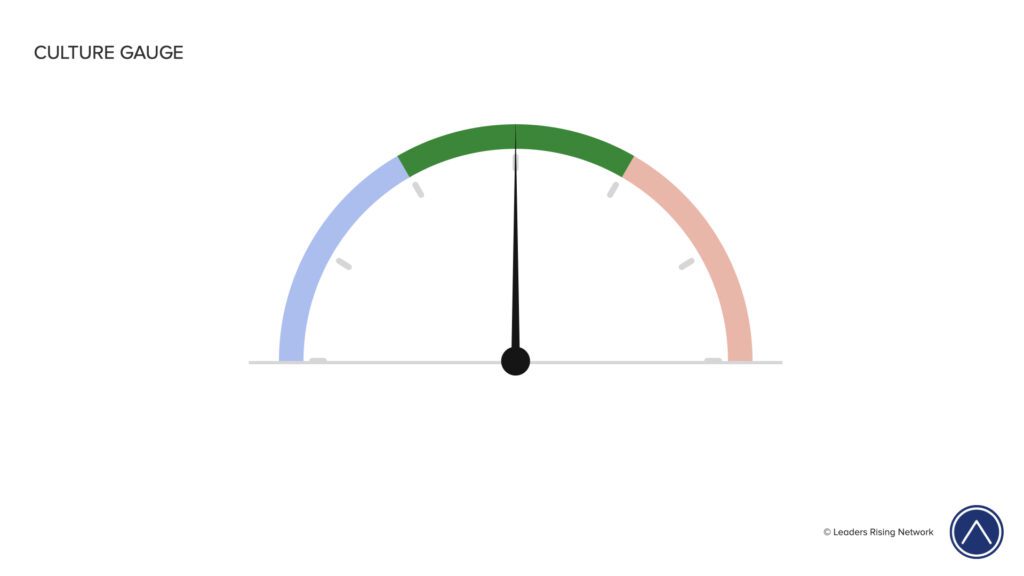You move fast. You expect excellence. And your team knows it.
But something isn’t clicking. Ideas don’t flow in meetings like they used to. Feedback feels filtered. You notice fewer pushbacks, more quiet nods. And while things still get done, there’s a nagging question in your mind:
“Why am I the only one pushing this forward?
You’re not wrong to drive performance. In fact, your standards have likely built your company’s success. But over time, drive without calibration can unintentionally create fear, hesitation, or passive compliance — especially among talented, high-potential team members.
What’s at Stake
High-drive leaders who don’t calibrate can find themselves in a lonely spot:
- Your presence silences contribution
- Feedback is filtered or sugar-coated
- Delegation feels risky because people don’t fully engage
- Your team stops growing — because they’re surviving, not thriving
It’s not because you’re doing something wrong. It’s because the leadership that got you here needs a new setting to scale others.
The Reframe: You Don’t Need to Lead Less — Just Lead Differently
We work with ambitious, driven leaders who want to grow their impact without sacrificing results. We’ve found that actual influence doesn’t come from intensity but from calibrated leadership: balancing high expectations with high support.
We call this liberating leadership: pairing high challenge with high support. When you do this well, people trust your intentions and rise to the occasion.
Case Study: Sarah, the Logistics VP
Sarah was known as a force in her regional logistics company. She delivered results, ran a tight ship, and outperformed her peers. But she was stuck: her direct reports weren’t stepping up. She was redoing their work, chasing updates, and feeling increasingly frustrated.
Sarah was a Pioneer Voice: confident, clear, and intense. Her team described her as “brilliant… and a little terrifying.”
We ran a Leader360 and discovered a consistent pattern: her team didn’t feel safe offering input. Her Pioneer Voice was unintentionally dominating conversations and decisions, overriding the thoughts and ideas of her team.
Using the 5 Voices and the Culture Gauge, we helped Sarah recognize how she was showing up and how to shift her tone and timing.
Six months later, her team delivered a major project on time without her having to step in daily. Her engagement scores improved, and her team began proposing solutions, not just reporting problems.
Tools to Calibrate Your Leadership
1. Dial It In with the Culture Gauge
This simple but powerful framework helps leaders assess how they’re showing up: too nice, too direct, or truly calibrated to bring the best out of their team.

The Culture Gauge is designed to help leaders assess and adjust how they show up in their relationships and communication. We all have natural tendencies: either we lean more toward kindness and relational depth (the cool side), or toward clarity and directness (the warm side).
Neither is wrong. But each becomes ineffective when overused or imbalanced. And leading in an “either-or” style will not bring the best out of your team.
On the left side of the gauge is the Cool Zone. When tensions rise, this is the leader who can instantly bring the temperature down in the room. This represents leaders who:
- Lead with high empathy and encouragement.
- At their best, they make others feel seen and safe.
But movement and progress are stifled when kindness isn’t paired with clarity or direction. These leaders may avoid hard conversations or lower expectations in the name of caring for their team.
At its extreme, this becomes a form of toxic positivity, where we say things that feel good but fail to stretch people toward growth. It feels nice in the moment, but it can ultimately lead to stagnation, confusion, and a lack of progress.
On the right side is the Warm Zone. Here, leaders prioritize directness, standards, goals, and results. This is where communication becomes mechanical or even harsh. Expectations may be well-defined, but they are delivered in ways that leave people feeling disposable, unseen, or overwhelmed.
At its worst, this clarity becomes toxic negativity: truth without grace, always pointing out errors and mistakes, and correction without care.
The center of the gauge is where we aim to lead. We are aiming for balance. For calibration.
This is the sweet spot where both kindness and clarity are held in tension.
Leaders in this zone are secure and emotionally grounded. They know who they are, they understand what needs to be done, and they communicate in a way that empowers others to move forward with confidence. They are neither passive nor abrasive. They are for the people they lead. They speak truth with care, offer direction with belief, and pursue outcomes while preserving dignity.
This is not about becoming emotionally neutral or impersonal. Instead, it’s about learning to lead from a place of confidence.
- name what’s true
- act with integrity
- invite others into growth
- not over-indexing on niceness or pressure
Each of us naturally leans toward one side or the other. The power of this tool is that it gives us language and awareness to recalibrate. When we notice we’re drifting too far into kindness without clarity, or into directness without caring, we can intentionally move back to center. And in doing so, we create high-performance environments where people can thrive and goals can be met with both heart and excellence.
2. 5 Voices Assessment
This tool identifies your leadership communication style and how others perceive it. It shows why some people shut down — and how to adjust.
3. Leader360
A confidential, 360-degree feedback tool that reveals blind spots and strengths. Combined with coaching, it’s a game-changer.
Three Ways to Calibrate Today
- Take the 5 Voices Assessment and identify your natural voice and tendencies under pressure.
- Map yourself on the Culture Gauge: Are you over-challenging? Under-supporting? Being too kind without raising the bar? Letting people off too easily? Find a way to Dial It In!
- Ask your team two simple questions: “What’s one thing I could do to better encourage your success?” and “Where might I be getting in the way?”
Closing Thought
You don’t need to change who you are, but you may need to adjust how you lead. Influence isn’t about intensity. It’s about trust.
And when your leadership is both strong and safe, your team shows up fully — and delivers more than you imagined.



